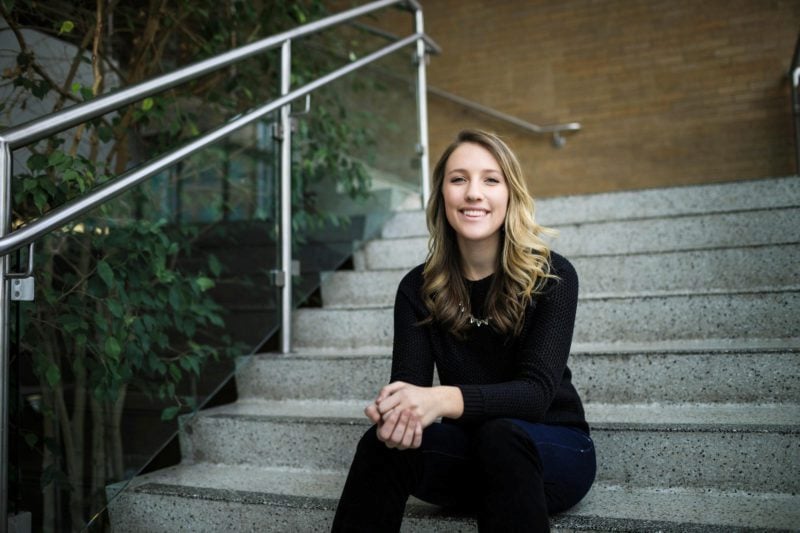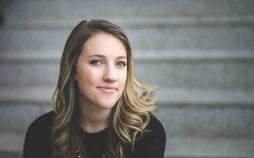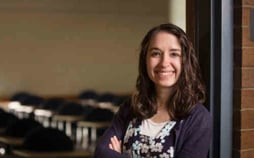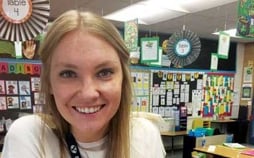Student Seeks to Improve Learning with Technology
Sydney Boyer, an elementary education major, who researched how teachers integrate technology into curriculum to engage students in meaningful learning.
April 2017

It is difficult to imagine a world without technology. Information, entertainment, and socialization are but a click away. Smartphones, tablets, and even watches are part of young people’s everyday lives, both in and out of the classroom. A recent study found that students spend as much as one-fifth of their class time using laptops, tablets, and smartphones for “non-class purposes” like texting, emailing, and using social media. Rather than ban technology from the classroom, teachers must find ways to integrate technology in the curriculum to engage students in meaningful learning opportunities.
This type of integration is easier said than done. As part of her research, Sydney Boyer, an elementary education major, observed teachers integrating technology into their lessons and even led professional development sessions to help them out. She has seen firsthand the struggles that teachers face in navigating this new world.
“Often the in-service teachers are very nervous and hesitant to use new technology,” she said. “Especially since a lot of them are experienced teachers. They already have their preferred methods.”
Mentored by BYU teacher education professor Jennifer Wimmer, Boyer focused her work on interactive whiteboards—the 21st century’s version of chalkboards. Interactive whiteboards are a sophisticated piece of technology that have the potential to impact and enhance both teaching and learning.
“Sydney has worked on all aspects of research—she has conducted a literature review and helped with data collection,” Wimmer said. “She has been instrumental in helping teachers and students understand how interactive whiteboards work.”
The high expectation set by Professor Wimmer encouraged Boyer to work hard and aim high. Boyer now has graduate school in her plans, which she did not before.
“Professor Wimmer has really taken us under her wing,” Boyer said. “She is an amazing example of someone who really understands what it means to be a teacher—she doesn’t just think of us as her staff, but she sees our potential and helps us develop it. She really pushes us to do more than just graduate.”
Boyer has also been surprised to see that, although technology is easily accessible, it is not being integrated into classrooms very much yet. She has spent more than two years working on her research and doubts it will ever really be completed.
“The research is just something that grows with technology as it comes,” she said. “There is a gap between the classroom and the real world right now. A lot of times the classroom is a couple of steps behind what’s happening. This gap just gets bigger and bigger, but technology is a way to bridge it and bring that real-life aspect to the classroom. Right now, we’re only scratching the surface.”

Sydney Boyer, an elementary education major, who researched how teachers integrate technology into curriculum to engage students in meaningful learning.

At BYU, Allyson studied how students have mathematical epiphanies; now, she’s making them happen.

BYU scholarships make it possible for Katelyn Woolley to focus on her passion for becoming a better teacher.